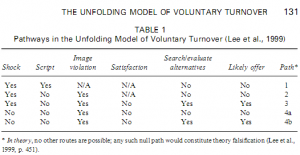Successful Organizations Need Leaders At All Levels
Anybody who has ever watched interviews with managers or coaches of professional sports teams will have heard plenty of discussion of the need for leaders throughout the team. The same thinking is also increasingly a preoccupation of business people. Indeed, the need for “leaders at all levels” is one of the 12 critical issues identified in the Global Human Capital Trends 2014 survey published earlier this month by Deloitte University Press, the publishing arm of the professional services firm’s leadership center.
In a paper examining the findings, Adam Canwell, Vishalli Dongrie, Neil Neveras and Heather Stockton – who work for Deloitte in a range of locations – point out that leadership “remains the No. 1 talent issue facing organizations around the world,” with 86% of respondents to the survey rating it “urgent” or “important.” However, the fact that only 13% say they do an excellent job of developing leaders at all levels means that this area has the largest “readiness gap” in the survey.
Finding good leaders has, of course, always been a crucial issue for all sorts of organizations. This is why the armed forces, for instance, put so much effort into training their officers and why business schools and other providers of executive development have thrived. But the Deloitte team argues that “21st-century leadership is different”. Canwell and his colleagues write: “Companies face new leadership challenges, including developing Millenials and multiple generations of leaders, meeting the demand for leaders with global fluency and flexibility, building the ability to innovate and inspire others to perform, and acquiring new levels of understanding of rapidly changing technologies and new disciplines and fields.” No wonder organizations are coming up short.
Almost inevitably, the problem is felt to be especially acute today. This is a result of the strengthening of the global recovery, the desire on the part of the companies to expand in new markets and the growing numbers of older leaders choosing to retire.
A key part of the solution identified by the Deloitte team is for organizations to develop leadership pipelines at every level. At present, it says, companies are not only not developing enough leaders, they are also not equipping those they are creating with the critical capabilities and skills they need to succeed. “Today’s market environment places a premium on speed, flexibility and the ability to lead in uncertain situations. At the same time, the flattening of organizations has created an explosion in demand for leadership skills at every level.”
It appears that there is no avoiding spending money when it comes to dealing with this situation. The best performing companies already spend thousands of dollars each year developing each would-be leader on their staff, with the figure for senior leaders in the tens of thousands of dollars. Creating strong leadership programs for leaders at all levels – as advocated – requires sustained and substantial investment. At the early stages in the leadership pipeline, potential leaders need to acquire core skills in supervision and management, with frequent assignments to build on this base. Later on, they need to understand all the business functions before becoming executives, when business and product strategy will be central, along with experience of driving change within large teams. Companies need to understand that there are no shortcuts to building broad and deep leadership teams. New leaders typically need 18 months before feeling fully comfortable in a new role, while for those in the mid-level the period is more likely to be two to three years.
The paper also calls for companies to be more flexible in terms of leadership paths. Some leaders will move into senior roles relatively quickly because of a particular situation, while others will develop more slowly.
Above all, though, organizations need to realize that developing leaders amounts to more than having a selection of training programs. “Senior executives should create a culture that broadens the opportunity for leaders to develop in new ways,” writes the Deloitte team. “This means putting potential leaders in positions that stretch them beyond their current skill sets, and continuously coaching and supporting leaders so they can build their capabilities as rapidly as possible.” This is increasingly well recognised, say the authors, but it is “simply not widely adopted and practiced”.
Where should companies begin? A few starting points include:
Engaging top executives to develop leadership strategy and actively govern leadership development.
Aligning leadership strategies and development with evolving business goals
Focusing on three aspects of developing leaders – developing leaders at all levels, developing global leaders locally and developing a succession mindset
Implementing an effective – and unique – leadership program.
But there is no time to delay. The best-performing organizations are already on their way.
SOURCE: Forbes




